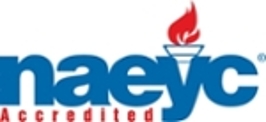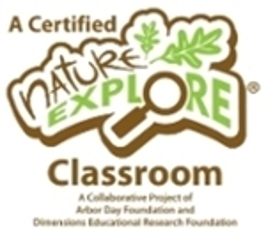Curriculum
Curriculum Framework
The College’s support for academic freedom guides our belief that as a demonstration and laboratory program, our teaching staff have both the privilege and responsibility to explore and experiment with curriculum that is developmentally appropriate (Copple & Bredekamp, 2009) [1] and reflective of current research literature on early childhood education. We facilitate and/or conduct research that will advance understanding of how young children learn, grow, and develop. ECDC encourages responsible eclecticism (Jaruszewicz, 2005) [2]and supports our teachers’ roles as participant/observers, action researchers, and curriculum decision-makers. Teachers are expected to know, understand, and collectively participate in on-going dialogue about how the program philosophy translates into curriculum decision-making and daily activities that demonstrate best practice and support children’s individual needs and interests. Therefore, ECDC works within a curriculum framework, rather than adopting a particular commercial or published curriculum. We also work with SOE professors in the Teacher Education Department to model curriculum practices that enhance the CofC students' pre-service teacher preparation.
Curriculum Influences
The visitor to ECDC will see concrete evidence of how our program is influenced by well-known early childhood curricular approaches. For example:
- We strive to create a physical environment that is amiable, home-like, and aesthetically pleasing (Reggio Emilia; Montessori; Waldorf).
- Our classroom centers and materials are carefully organized and labeled to facilitate the child’s independence and sense of responsibility (High Scope; Montessori; Reggio Emilia).
- Our daily schedules provide ample opportunities for children to make conscious choices and account for their decisions (Creative Curriculum; High Scope).
- Topical investigations are selected, planned, and guided by children’s individual and collective interests and take the form of increasingly long-term project work as the children get older (Reggio Emilia; Project Approach).
- Arts are infused into the curriculum in many ways (Waldorf)
- Curriculum activities extend learning to the out of doors (Waldkindergarten).
- Our teachers conduct meaningful, integrated literacy activities that include a focus on Writing and Reading Workshops (Lucy Calkins, Columbia University).
- Block-building is a highly valued activity as a foundation for building science and mathematical thinking (Bank Street)
- We continually stress development of executive functions through dialogue, play, and providing children with both autonomy and accountability Tools of the Mind (Bodrova & Leong, 2007)
Curriculum Goals
- Provide children opportunities to explore and extend their interests and abilities
- Help children acquire skills and dispositions they will need to become life-long, self-directed learners
- Teach children to understand and practice tolerance and respect for others as unique and interesting human beings
Standards and Objectives
ECDC Program Objectives: ECDC uses several sets of applicable standards to inform program objectives:
- South Carolina Early Learning Standards apply to children birth to 60+months and address curriculum from a developmental perspective
- Academic Standards (for K-12)
These standards serve as our program objectives for curriculum and assessment of growth and development. The standards address Approaches to Play and Learning, Emotional and Social Development, Health and Physical Development, Language Development and Communication, Mathematical Thinking and Expression, and Cognitive Development.
Curriculum Content
The curriculum framework is guided by statements that convey how the program philosophy is contextualized. As each teacher translates our philosophy into the day-to-day planning process to design and plan classroom activities, we keep the following statements in mind with respect to different content areas in the curriculum.
Ecological Responsibility: As members of the ECDC community, children have the opportunity to develop a sense of responsibility for each other and their natural environment and resources. Gardening, recycling, and care of the physical and natural environment are an increasing part of our curriculum as we look for ways to help children develop an awareness of the importance of a sustainable and ecologically respectful global environment.
Social Studies: Childrens’ awareness of themselves and the world is developed by establishing respectful and supportive classroom communities that focus on the sharing of cultures, customs, language, and traditions of the families in the class. They learn about their immediate world with many field trips, experiences, and interactions with people and places in the local community.
Language Arts & Emergent Literacy: Multiple literacies develop through daily experiences and practice with many forms of communication. Making extensive use of high-quality, culturally responsive literature, modeling, recording, and revisiting conversations and discussions, and generating literacy products such as books, charts, and letters, enables children to progress from the acquisition of language to the productive use of oral and written language to express original ideas.
Physical Development: Physical development occurs both naturally through various kinds of play and intentionally by planning opportunities and activities to strengthen and refine fine and gross motor skills. Physical experiences develop the child’s body coordination, balance, agility, and spatial awareness.
Creative Arts: Recognizing that supporting and encouraging creativity is important for the development of the whole child, children need frequent opportunities to express and explore their ideas in many ways. They need exposure to a wide variety of flexible materials that can be used in different ways. The arts are a primary means by which cultures represent their history, achievements, and values; therefore, exposure to a wide variety of visual arts, music, dramatic, and movement activities is essential. They are the “hundred languages of children.” (Edwards, Gandini & Forman, 1993; 1998)[ 3].
Math: Children acquire fundamental mathematical concepts, logical thinking, and problem solving through the manipulation of materials and application of skills and concepts to real life situations. Concepts learned through work with manipulatives, block-building, sand and water play, and problem posing/solving embedded in group project work include one-to-one correspondence, patterning, counting, sorting, comparing, shape recognition, addition, and subtraction.
Science: Children are innately curious about the natural world and their environment; they develop science process skills through observing, classifying, measuring, communicating, inferring, predicting, and experimenting with familiar objects, animals, and natural processes. Experimenting, learning through trial-and-error, hypothesizing, and developing systematic inquiry processes take time and repeated opportunities to discover how things move, grow, and change. Cooking activities also offer practical and meaningful examples of how scientific principles are applied in daily life.
Social/Emotional Competence: The learning environment should encourage development of childrens’ positive self-concepts by enabling them to cope with setbacks and frustrations without losing self-confidence. Children are supported as they learn to make choices, assume responsibility, become independent, express feelings and needs in words, and participate in creating and abiding by the rules established for behavior in the classroom environment. ECDC children learn to respect others’ feelings, choices, and opinions.
Health and Safety:Through adult modeling and practice, children learn health and safety concepts such as personal hygiene, playground and classroom safety and emergency preparedness. These are reinforced in daily routine. Cooking and serving healthy snacks and encouraging parents to prepare balanced lunches emphasize proper nutrition.
Assessment
Our assessment system is grounded in the concept of developmentally appropriate authentic assessment as the most reliable means for gaining credible information about what and how children are learning and progressing across all the developmental domains. Therefore, assessment is conducted in settings familiar and comfortable for children and by adults they know and trust.
Purposes:
- Gather information using multiple means that are culturally respectful, meaningful, authentic, and accurate
- Describe each child’s development and learning
- Provide families with comprehensive and relevant information about progress and/or indicators that referral is needed for extended diagnostic evaluation
- Identify children’s interests and needs
- Make appropriate instructional decisions and adaptations for each child
- Use assessment results for program improvement
- Communicate effectively with parents as partners in their child’s early childhood education
Procedures: Primary methods include
- Observation
- Anecdotal records
- Skills checklists
- Developmental screening (Ages & Stages Questionnaire)
- Family surveys (Home Information Form HIF 2-3 years) (Home Information Form HIF 4-5K)
- Interest inventories
- Performance assessments
- Work sampling
- Informal & written communication
- Developmental narratives
When warranted, additional formal and/or informal methods that may be used include:
- Running records
- Behavior checklists
- Time/event sampling
- Video/audio recording
- Standardized testing
Timelines:
Assessment begins prior to the child’s initial enrollment with parent surveys and home visits and continues throughout the academic year, with assessment information for each child maintained in a portfolio that moves with the child through the program from teacher to teacher. The Master Teachers conduct formal parent/teacher conferences once each semester and maintain close, informal contact with families throughout the year.
Confidentiality:
Because ECDC is a laboratory/demonstration school, there are many students and members of the community visiting ECDC and doing observations, research, and practicum activities. During these activities, strict family confidentiality is preserved. Children are identified to observers by first name only. ECDC complies with all federal confidentiality requirements as outlined by the university’s policies for compliance with the Family Educational Rights and Privacy Act.
Children with special needs:
Children are accepted for enrollment assuming that (a) the child is able to benefit from the ECDC program, (b) the child’s behavior does not pose a significant threat to the health and/or safety of the other children or staff, and (c) parents abide by our policies and cooperate with and support our efforts to meet their child’s individual needs.
In South Carolina, public schools provide early intervention services through the
BabyNet (birth-3) and the Child Find (3-5) processes, delivered through the Office of Exceptional Children and Youth in the Charleston County School District. If an enrolling child has already been identified with special needs, ECDC staff meet with the family and external professional resource staff to review the IFSP or IEP. If our assessments and collaboration with families indicate the need for additional screening or developmental evaluation, parents are encouraged to initiate the Child Find process.
Communicating Assessment information:
Teachers maintain ongoing verbal, electronic, and informal written communications with families about both group and individual child progress. Teachers conduct conferences with each family once per semester, at which time all assessment information from the semester is reviewed and a detailed summary progress checklist and narrative report based on the SC Early Learning Standards is shared and discussed.
[1] Copple, C. & Bredekamp, S. (2009). Developmentally appropriate practices for children in programs aged birth–eight. Washington, DC: NAEYC.
[2] Jaruszewicz, C. (2005). Responsible eclecticism: Using a structured analysis process to facilitate curriculum discourse with graduate preservice early childhood education students. Journal of Early Childhood Teacher Education, 26(4), 361-375.
[3] Edwards, C.; Gandini, L., & Forman, G. (eds.) (1998). The hundred languages of children (2nd ed.).Norwood, NJ: Ablex.









